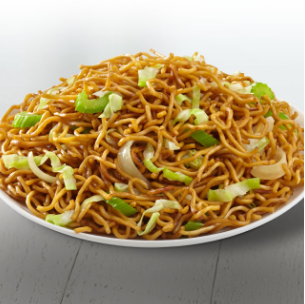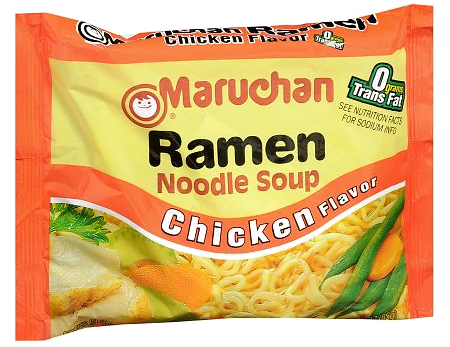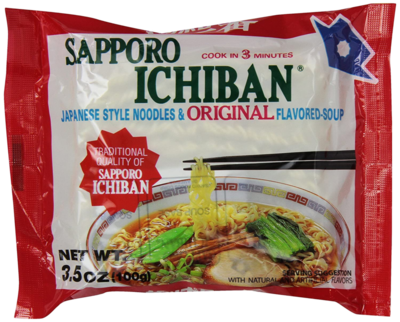Lo mein/Chow mein Chinese stir-fry noodles

A bit à la Panda Express. Here's how to do it and, because you're in charge, do it better. Yakisoba/Ramen-style noodles are inexpensive and easily found in most grocery stores, but certainly at Asian grocers. I have used both the brands pictured below.
From Amazon at the time I composed this recipe, you could purchase a case (24) of Maruchan for $6. That's 25¢ per package. Buying Sapporo-brand single packages costs 75¢ at my local grocery store.
Chow Mein and Lo Mein are considered synonymous. mein means "noodle" whereas chow means "fried" while lo means "stir."
Chow mein is a Taishan word; Taishan is a region of Guangdong, west and south of Hong Kong, in extreme southwest China, the origin of many early immigrants.
Chow mein is very popular in the United States, India, Nepal and the United Kingdom, in fact, throughout the Chinese diaspora. On the east coast of the United States, it tends to refer to crispy (Hong Kong-style) noodles, while on the west coast to softer, usually steamed noodles. In this recipe, boiled noodles are stir-fried, but never to the point of becoming crispy just as at Panda Express, a west-coast business.
Besides being insanely tasty, this dish really only takes about 10 minutes including boiling water.
Yield
2 servings
Ingredients
|


|
Preparation
1. Boil noodles in salted water. The Yakisoba noodles might do well without salt, but if you have bought generic egg or lo mein noodles, you will need to salt the water or the result will be bland. Do this step while you're preparing the vegetables.
2. Slice onions and cabbage thin. Cut celery very thin on a bias (rather than as in illustration above).
3. Heat oil in pan to high, then add vegetables. Cook for a couple of minutes until beginning to caramelize. Toss and caramelize more. Add garlic, pepper, then brown sugar and toss. At this point, you do not want the garlic or sugar to burn, so hasten to the next step.
4. Add the noodles and keep tossing. Add soy and oyster sauce, toss more.
6. Serve.
Variations
For vegetables, the sky's the limit including julienned carrots, asparagus tips, etc.